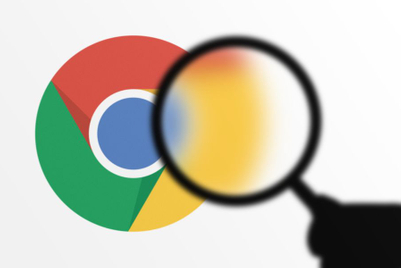
We’re all familiar with Google’s recent announcement that it will change how its Chrome browser handles cookies. Although Google announced these changes to provide more transparency and give control back to users, the move has created some confusion around the impact it will have on advertisers and adtech platforms, particularly around the creation, selling, and buying of third-party data. This confusion, however, originates from the lack of clarity on the key terms.
The difference between third-party data and third-party cookies
Third-party data and third-party cookies might sound similar, but they are very different things. Very often I come across marketers and media confusing the two, so let me first begin by setting their definitions straight: a third-party cookie is a cookie placed on a device by a website from a domain other than the one a user is visiting to store personalization preferences and tracking information. For example, when you visit Uniqlo’s website, a cookie may be placed in your web browser from one of Uniqlo’s marketing technology partners to remember that you were interested in that new collection of graphic t-shirts and let Uniqlo to subsequently market to that user across sites/channels beyond their domain.
Alternatively, third-party data refers to the data that you buy from outside sources that are not the original collectors of that data. Instead, you buy it from large data aggregators that pull it from various other platforms and websites where it was generated. Third-party data can include various types of information, whether it be demographic, interest, or intent data, and, depending on the source, there are many ways third-party data is acquired and used by marketers. It might have originated in an offline consumer data file onboarded through a partner like LiveRamp. Or it could be related to the collection of common consumer actions on publisher websites, like commenting on an article or sharing it on social media.
 RECENT AND RELATED RECENT AND RELATEDIndustry welcomes online tracking crackdown, despite short-term pain Remodelling digital advertising will ultimately deliver a cleaner, more sustainable ecosystem, according to a host of industry executives. |
With that in mind, Google’s blocking of third-party cookies doesn’t necessarily affect third-party data, because the two are completely different elements in a company’s set of consumer data. Depending on what that third-party data is and where it’s coming from, more aggressive treatment of third-party cookies by the Chrome browser may or may not have a material effect on the scale of third-party data.
For example, if Uniqlo wants to digitally market suits to people of a certain age, gender, and household income, it can purchase third-party demographic data from a consumer data company that has brought such data into the online world from offline records via a data onboarder such as LiveRamp. That demographic data was not created by tracking consumer activity across the web via third-party cookies—but it is third-party data. Finally, third-party data can be associated with mobile advertising IDs (MAIDs) and OTT device IDs, and in those cases, the data would not at all be affected by changes to treatment of third-party cookies.
So, to clear the confusion, third-party data and third-party cookies are not the same thing. However, with the changes coming to the Chrome browser, marketers need to be prepared as the impact on the ad marketing ecosystem will be felt, but in meaningful ways.
Symbiotic relationship between first-party data and third-party cookies
In the short term, news around the upcoming Chrome changes might cause unwarranted confusion between third-party cookies and third-party data. Over the longer term, marketers need to understand another important dynamic—namely, the relationship between first-party data and third-party cookies.
Third-party cookies play a critical role in the onboarding of offline data into web environments and are also the best connectors to sync such data with activation platforms such as DSPs, ad servers, or even attribution platforms. Historically, third-party cookies have been the ID plumbing of choice for connecting and activating first-party data. Without robust ID connectivity via third-party cookies, marketers and their technology/media partners are left to rely on a hodge-podge of different ID types and inefficient connection techniques. While it might be compelling to talk about the ascent of first-party data in the marketing ecosystem, we all must pay close attention to how such data can be utilized in an open, independent web. Otherwise, the only places marketers will be able to use their first-party data is within the large walled gardens, thereby scaling and fortifying their market power over everyone else.
For advertisers, the recent Google Chrome changes offer a clear improvement over the current “keep or delete” options, offering greater control and transparency for users. However, advertisers should bear in mind the distinction between third-party cookies and third-party data and that recent moves by browser companies may not have a direct impact on the underlying data they collect or activate. Third-party cookies and third-party data are both just two elements in the larger picture of consumer data that companies take advantage of for their campaigns and ad buys.
Regardless, advertisers should determine the next steps for continued changes in the ecosystem, and the first step of preparedness is to focus on their first-party data and the opportunities they can leverage.
Fred Marthoz is managing director for Southeast Asia at Lotame.



+(900+x+600+px)+(3).png&h=334&w=500&q=100&v=20250320&c=1)
+(900+x+600+px).jpg&h=334&w=500&q=100&v=20250320&c=1)
.jpg&h=334&w=500&q=100&v=20250320&c=1)


.jpg&h=334&w=500&q=100&v=20250320&c=1)

+(900+x+600+px).png&h=334&w=500&q=100&v=20250320&c=1)
.jpg&h=334&w=500&q=100&v=20250320&c=1)

.jpg&h=268&w=401&q=100&v=20250320&c=1)
+(5).jpg&h=268&w=401&q=100&v=20250320&c=1)

.jpg&h=268&w=401&q=100&v=20250320&c=1)
+(900+x+600+px)+(2).jpg&h=268&w=401&q=100&v=20250320&c=1)
+(900+x+600+px)+(3).jpg&h=268&w=401&q=100&v=20250320&c=1)

+(900+x+600+px).png&h=268&w=401&q=100&v=20250320&c=1)